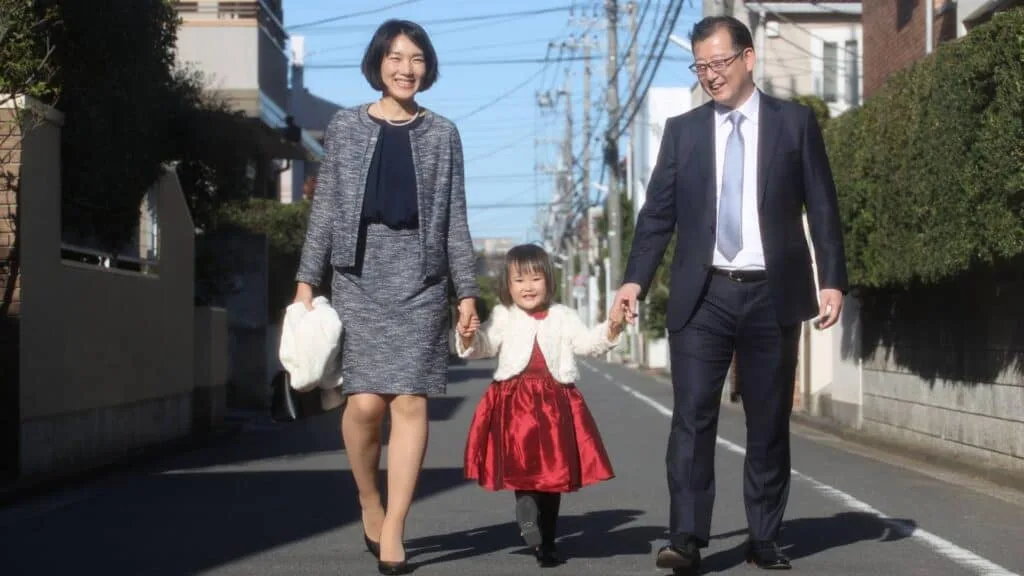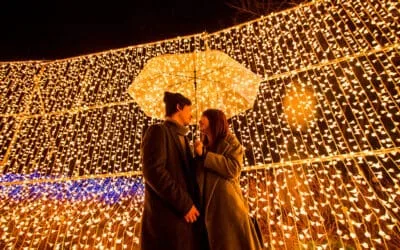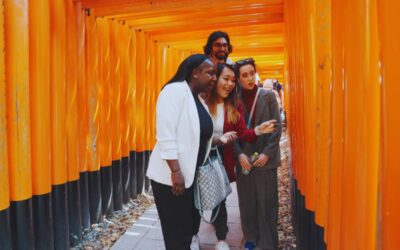Shichi-Go-San is a traditional Japanese event that has been celebrated for centuries. Many families visit shrines with their children dressed in their finest clothes for the Shichi-Go-San celebrations.
However, not many people know much about the origin and meaning of Shichi-Go-San, nor do they have a firm grasp of the preparations and procedures required for the ceremony.
Let’s explore the meaning of Shichi-Go-San, where to visit shrines, the preparations required for the ceremony, and appropriate clothing.
What is the meaning of Shichi-Go-San?
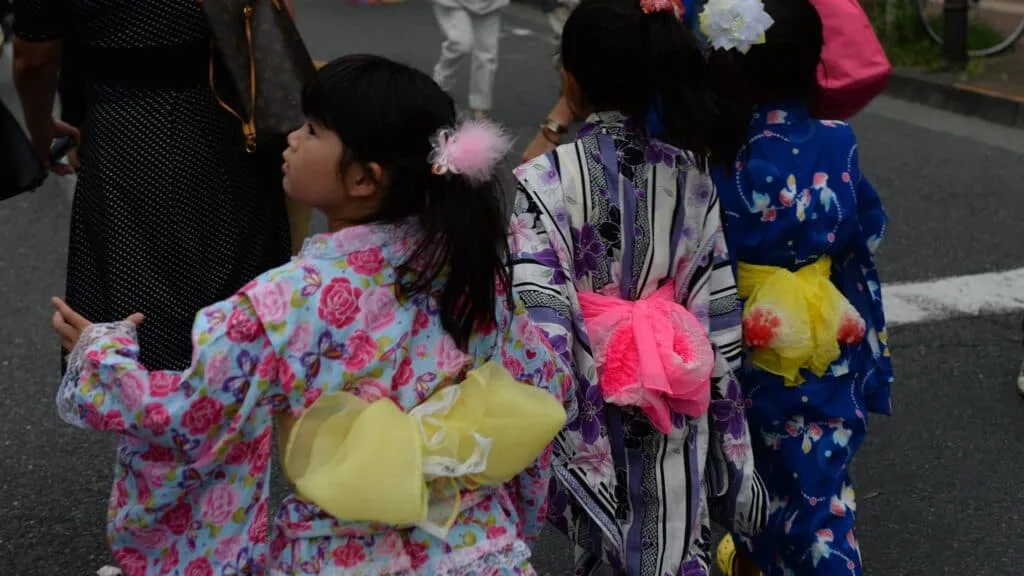
Shichi-Go-San celebrates and prays for the healthy growth of children and, as the name suggests, is held at the ages of three, five, and seven. Each age’s ceremony has a different name and meaning, and the timing of the ceremony varies for boys and girls.
First, let’s take a closer look at when Shichi-Go-San was first held and the meaning of the three ceremonies.
Origin of the Shichi-Go-San and the Meaning Behind the Rituals
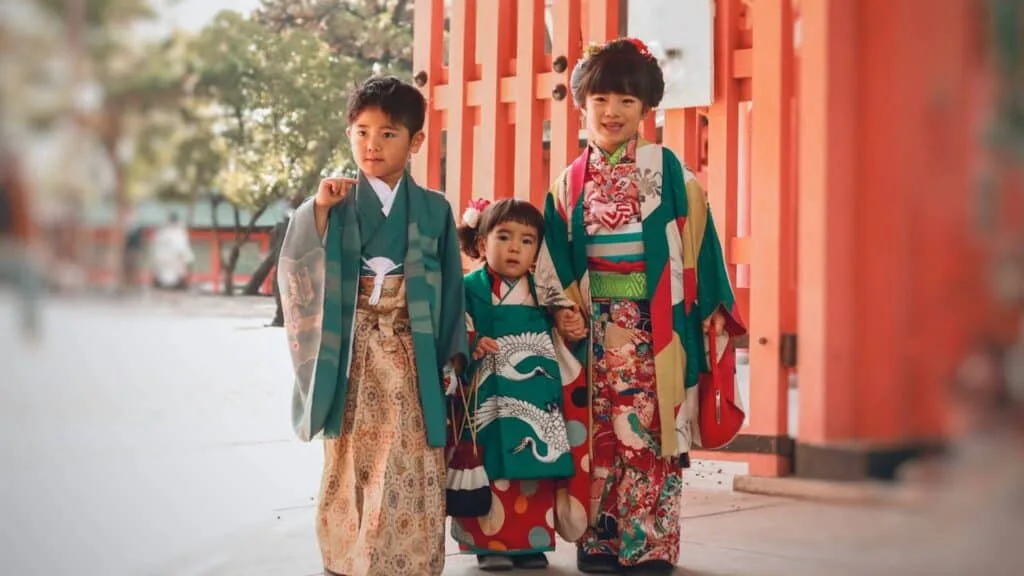
There are various theories about the origin of Shichi-Go-San, but it is said to be based on three rituals held at court from the Heian period (794-1185).
In the past, when medical care was less developed and hygiene was not as good as it is today, child mortality was very high. Children were treated as ‘kami no uchi’ (children of the gods) until they reached the age of seven. At that point, they were recognized as full-fledged human beings.
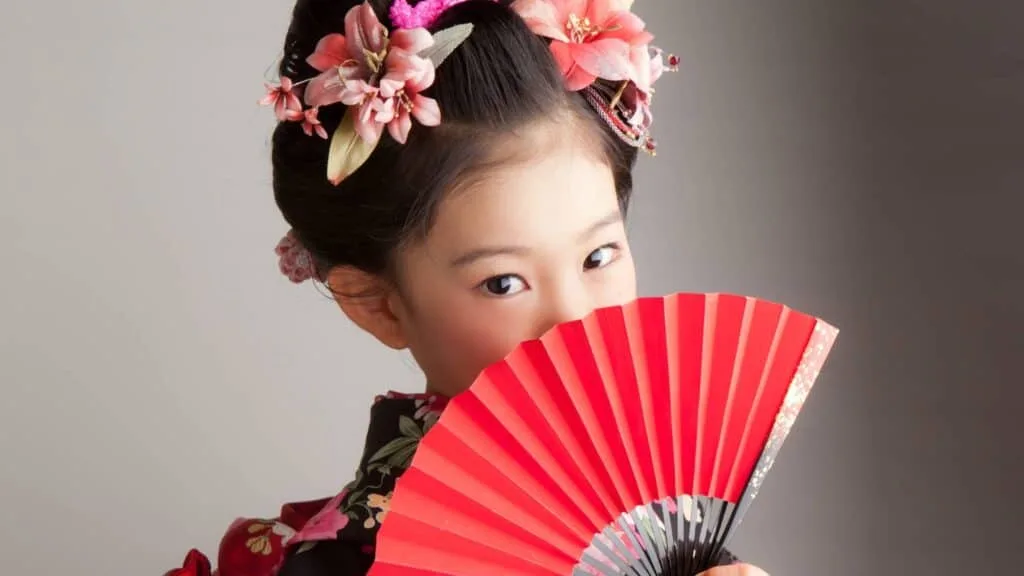
It was a great joy to see a child grow up safely, and as a parent, one could not help but wish for their healthy growth. Shichi-Go-San originated as a thanksgiving and celebration to the gods for the healthy development of children at the ages of three, five, and seven. This tradition eventually spread among samurai families and merchants, becoming the model for the current Shichi-Go-San during the Edo period.
It is widely believed that the name ‘Shichi-Go-San’ became common among the general public during the Meiji era (1868-1912) and that its present form was established after the Taisho era (1912-1926).

There is a reason why three, five, and seven-year-olds were chosen as milestones for celebration. When the Chinese calendar was introduced to Japan, odd numbers were considered yang or good luck. Another reason is that these ages are seen as key stages in child development, with children gaining language skills at three, wisdom at five, and losing their baby teeth at seven.
The age of seven, in particular, was considered a time of grand celebration, as it marked a child’s full “birth” from ‘kami no uchi’ (God’s child) into this life as a human being.
Shichi-Go-San customs have developed independently in different regions, so there may be slight variations in practices. The three main ceremonies are as follows:
Hair-Placing Ceremony for Three-Year-Old Boys and Girls
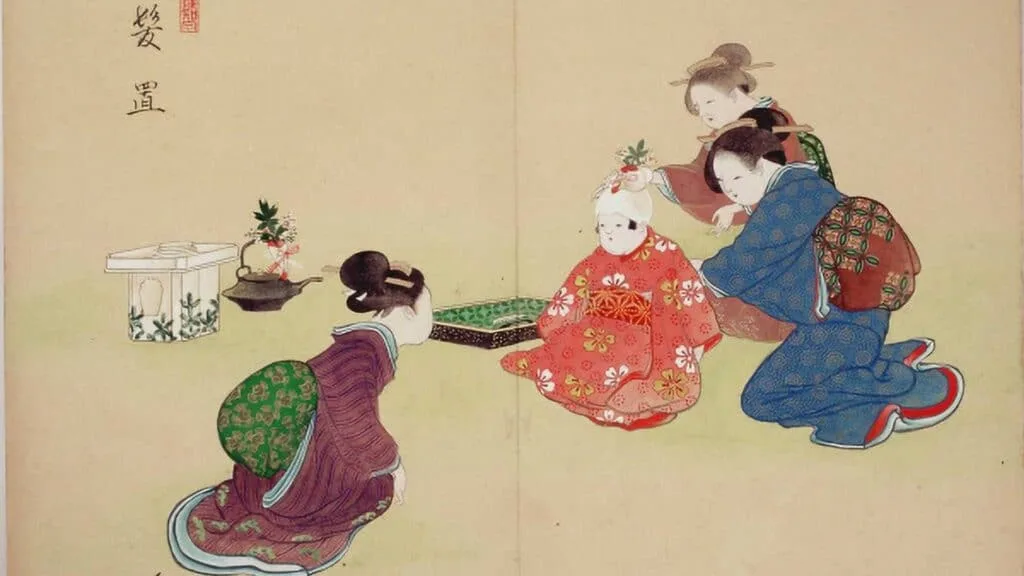
During the Heian period (794-1185), it was customary for both boys and girls to have their heads shaved on the seventh day after birth and keep them shaved until around the age of three. It was believed that keeping the head clean prevented illness and that healthy hair would grow later.
A ‘hair-placing ceremony’ was held around the spring of the child’s third year. This event was celebrated by placing a piece of white thread or cotton on the child’s head to pray for long life.
Hakamagi Ceremony for Five-Year-Old Boys
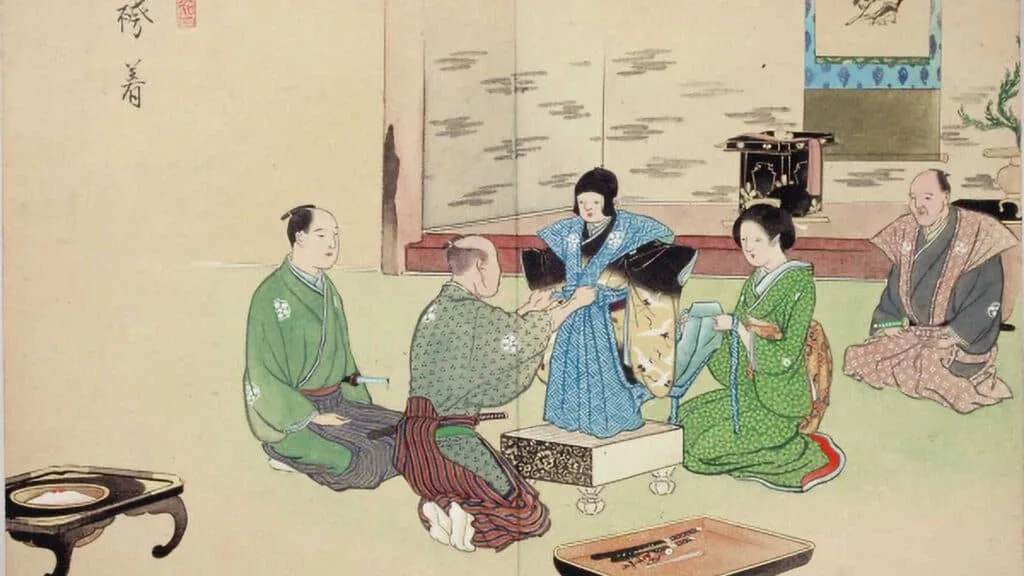
During the Heian period, the ‘Hakamagi’ ceremony was held for boys aged between five and seven, when they first put on a hakama, the formal attire of the time. This ceremony, also known as ‘chakko,’ is thought to mark the boy’s first step into manhood.
Initially, the ceremony was performed for both boys and girls, but during the Edo period, it became a boys-only event. During the ceremony, the boy would first stand on a board, symbolizing “catching the sky,” face a direction of good fortune, and put on the hakama, starting with the left foot, which was considered auspicious. It is also said they wore a crown and worshipped the gods of the four directions to ensure victory over enemies.
In the modern imperial family, the Chakko ceremony is still held for boys at age five, followed by the Fukasogi ceremony, in which the boy jumps from the top of a Go board. Shrines across Japan hold a Go board ceremony during Shichi-Go-San pilgrimages.
Obi-Toki Ritual for Seven-Year-Old Girls

In the Kamakura period (1185-1333), a ceremony was held to mark the first time an obi (sash) was tied after removing the cord used to fasten a child’s kimono. This ceremony, later known as the ‘Obi-Toki Ceremony,’ was established during the Muromachi period (1336-1573) and originally celebrated at age nine for both boys and girls.
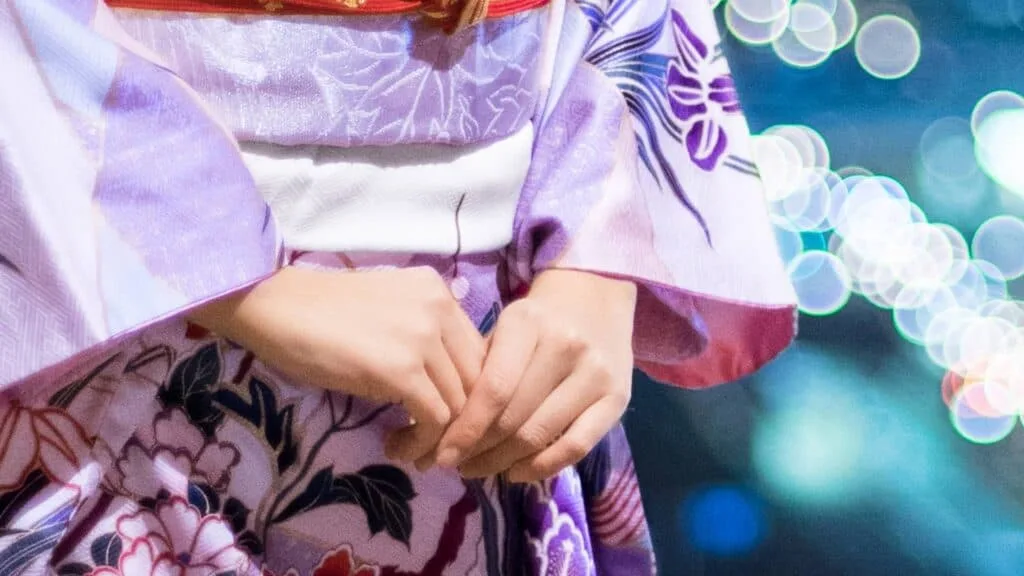
During the Edo period, the Hakamagi ceremony became the rite of passage for boys at age five, while the Obi-Toki ceremony was held for girls at age seven, symbolizing the beginning of their journey into womanhood.
Where Should I Go for the Shichi-Go-San Ceremony?

For the Shichi-Go-San ceremony, families typically visit a shrine to give thanks for their child’s growth. Generally, it is customary to visit a nearby shrine where the local deity (Ujigami-sama) is present. However, many families today visit famous shrines instead.
You are not limited to local shrines. It can be meaningful to visit shrines with unique histories, beautiful landscapes, or family significance. However, be mindful that children, especially when dressed in kimonos or formal attire, may get tired if the shrine is far away.
When planning a distant visit, check the weather forecast, whether reservations for prayers are required, the prayer fee, and parking availability in advance. Remember that the children are the main focus of the event, and ensuring their comfort is essential.
Shichi-Go-San Rituals
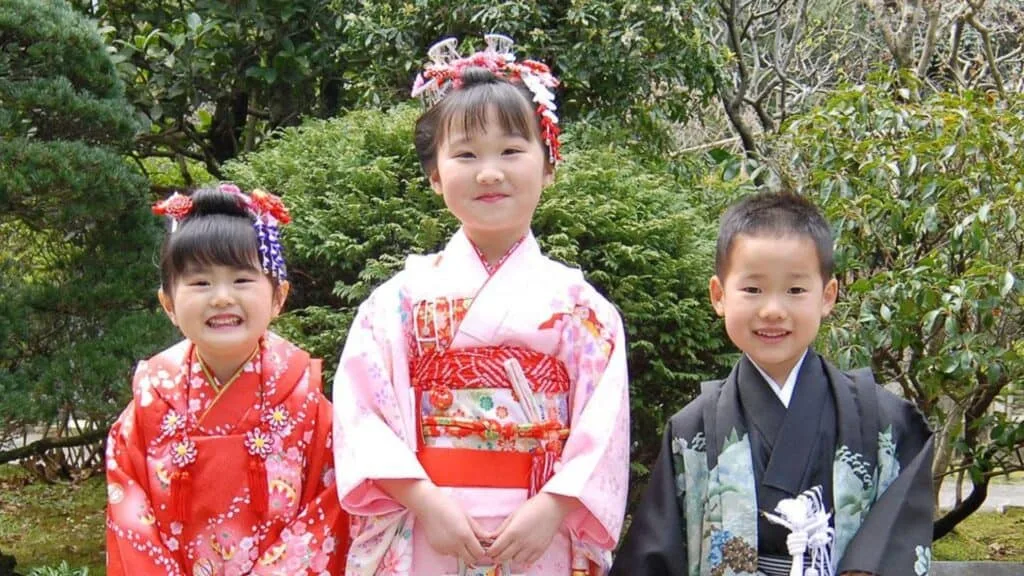
There are many things to book and prepare for before the Shichi-Go-San ceremony, such as prayers, dressing, and photography. If the ceremony is held on or around 15 November, it is generally advisable to begin preparations by September at the latest.
Start planning in advance to ensure that your child’s important milestone is celebrated smoothly.
1. Make a reservation at the shrine you wish to visit.

Reservations are often required for prayers at shrines, so first, make a reservation at the shrine you plan to visit. Although the official date for Shichi-Go-San is 15 November, it’s recommended to plan by summer and contact the shrine by early September, as the actual day and the weekends around it tend to be crowded.
When inviting grandparents or other family members, coordinating everyone’s schedule can be tricky. Some families avoid the busy November period and visit the shrine in September, October, or early December. In any case, it’s best to arrange the schedule as early as possible.
When making a reservation, confirm the details of the prayers, the time required, the fees, and whether parking is available. It’s also a good idea to prepare a noshi-bukuro (a decorative envelope) and the appropriate coins for offerings before the day of your visit.
2. Book a photo shoot.

If you want professional photos, either by a visiting photographer or at a studio, be sure to make a reservation. While you can have the photos taken on the day of Shichi-Go-San, many families opt to schedule the shoot for another day, considering the child’s stamina and the family’s schedule.
Of course, you can also do the photo shoot long after Shichi-Go-San. For example, you might combine the session with a birthday celebration, with siblings’ milestones, or simply to avoid peak periods.
Some studios offer additional services such as costume rental, hair styling, and makeup, or they can lend kimonos for shrine visits.
3. Make an appointment for dressing, hair and make-up.

Many children wear kimonos for Shichi-Go-San and will need their hair and makeup done on the day of the event. Find a hairdresser who can also help with dressing and book their services by mid-September at the latest. Small children may feel nervous or uncomfortable in unfamiliar places, so it’s a good idea to choose a familiar hairdresser or one who specializes in working with children.
If you are renting a costume, some shops may also offer dressing services, so be sure to ask when making your reservation.
4. Try on costumes.

About a month before Shichi-Go-San, arrange for a dress fitting. Besides checking the size of the costume, make sure you also prepare tabi socks and sandals in anticipation of the event.
Once the kimono is on, have the child put on the tabi and sandals to ensure they can walk comfortably. Some children might resist wearing the costume if it’s shown to them for the first time on the day of the event. Regularly showing them the outfit beforehand and discussing how special it is could help them get used to the idea of the event.
5. Prepare the camera/camcorder and the offering, then head to the shrine!

The day before your visit, check the memory and batteries of your camera or camcorder to avoid any technical issues on the day. It’s also a good idea to prepare spare batteries and memory cards. Additionally, make sure to pack items like towels, a change of clothes for your child, and comfortable shoes.
Prepare the offering (first fee) in advance. Use a new note and place it in a noshi-bukuro (a decorative envelope) with a red-and-white bow-tied mizuhiki (decorative cord). Write the child’s name on the lower half and ‘Hatsuho ryori’ or ‘Tamagushi ryori’ on the upper half, depending on the shrine.
Place the money in the inner envelope, with the note facing outwards and upwards. On the front of the inner envelope, write the amount of money as ‘kin 00 yen,’ and on the back, in the lower left-hand corner, write your name and address. If there is no inner envelope, write the amount, address, and name on the reverse side of the noshi-bukuro.
What is the Appropriate Attire for Shichi-Go-San?

Shichi-Go-San is a private celebration, so there are no strict rules on what to wear. However, considering that the ceremony takes place in front of the gods, it is recommended that both children and families dress in a kimono, suit, or formal attire.
Choose clothing appropriate for the season, the child’s age, and their preferences, keeping in mind basic etiquette—such as avoiding overly casual or revealing outfits.
Children’s Clothing

Many children wear kimonos for Shichi-Go-San, each with a unique style based on their age.
Three-year-old girls typically wear a ‘mitsumi’ (three-piece kimono), a soft heko obi sash, and a sleeveless jacket called a hifu. This attire is designed to be lightweight and easy to move in for younger children.
Seven-year-old girls wear a child-sized version of an adult kimono called a yotsumi. The accessories and dressing methods are the same as those for adults, including the use of a nagajuban (inner kimono), obi, obiage, obijime, and accessories such as a fan and hakoseko.
Boys wear a haori hakama for both three- and five-year-olds. Sometimes, the miyamairi kimono (used during the child’s first shrine visit) is re-tailored and worn with the hakama.
Additionally, Japanese kimonos are worn with tabi socks and zori sandals. Many families opt for Western-style dresses or suits on the day of the shrine visit, as some children find it difficult to walk in zori or may need to use the restroom frequently in a kimono. For this reason, some families take pre-shoots in kimono and then wear Western-style clothing for the actual visit.
Parents’ Attire

The children are the stars of the Shichi-Go-San celebration, so parents should avoid standing out too much. Their clothing should be more formal than casual, but not so eye-catching that it overshadows the children.
Mothers often wear elegant and tasteful outfits. While many choose dresses or formal suits for ease of movement while caring for their children, some mothers opt for kimonos to match their child’s attire. If wearing a kimono, choose an informal houmongi (visiting kimono) or a colored kimono.
Fathers usually wear a suit, regardless of what the child or mother wears. A formal business suit is acceptable, though dark-colored suits are generally preferred. Shirts and ties should be simple but elegant enough to complement the child’s kimono.
Family members’ outfits should be more understated than the child’s, with couples ensuring their attire is coordinated and balanced.
Embracing the Tradition of Shichi-Go-San

Shichi-Go-San is a beautiful reflection of Japan’s deep respect for tradition and family. By understanding its origins, rituals, and significance, families can fully appreciate the celebration and make lasting memories. Whether it’s through the heartfelt prayers at the shrine, the joy of seeing children dressed in traditional attire, or the careful preparations leading up to the ceremony, this occasion is a meaningful milestone in a child’s life.
As you and your family take part in this cherished event, you’re not only honoring your children’s growth but also connecting with Japan’s rich cultural heritage.

